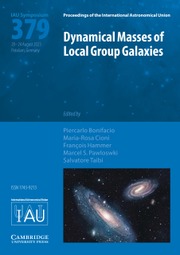No CrossRef data available.
Article contents
Feedback from quasars: The prevalence and impact of radio jets
Published online by Cambridge University Press: 29 January 2021
Abstract
I will present our ongoing multi-wavelength study on the prevalence and impact of radio jets in a sample of z < 0.2 type 2 ‘obscured’ quasars who’s high bolometric luminosities make them ideal local analogues of distant, more common, quasars. Despite being classified as ‘radio quiet’ (log L[1.4GHz] = 23.3 - 24.4 W/Hz), our high spatial resolution (∼0.25”) radio observations (VLA and eMERLIN) reveal jet like structures on 1–25kpc scales in ∼80% of the sample. Our integral field spectroscopy reveals jet-ISM interaction and outflows in all cases. Our work suggests that radio jets are an important feedback mechanism even during a typical ‘quasar’ phase. Using ALMA and APEX we are now investigating the impact of these jets and outflows on the molecular, star forming, gas; looking for signs of depletion and excitation. Preliminary results suggest a depleted molecular gas supply in these sources. I will present all of these results, focused on our pilot study of 10 targets and then introduce our on-going work on an expanded sample of 42 low-redshift quasars. Our latest results come from MUSE/AO and ALMA from which we are carefully characterising the properties of the ionised and molecular outflows at sub-kpc resolution.
- Type
- Contributed Papers
- Information
- Proceedings of the International Astronomical Union , Volume 15 , Symposium S356: Nuclear Activity in Galaxies Across Cosmic Time , October 2019 , pp. 253
- Copyright
- © The Author(s), 2021. Published by Cambridge University Press on behalf of International Astronomical Union


